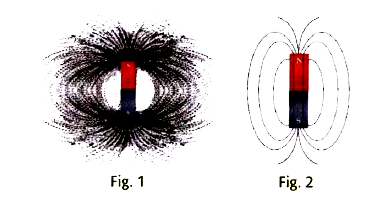Can two isothermal curves intersect each other?
To determine whether two isothermal curves can intersect each other, we need to analyze the properties of isothermal processes in the context of the ideal gas law.
1. Understanding Isothermal Curves:
- An isothermal curve represents a process that occurs at a constant temperature. In a Pressure-Volume (PV) diagram, these curves are hyperbolic in shape.
2. Equation of State:
- The ideal gas law is given by the equation:
PV=nRT
where P is pressure, V is volume, n is the number of moles of gas, R is the ideal gas constant, and T is the absolute temperature.
3. Implications of Intersection:
- If two isothermal curves intersect, it would imply that at the same point (same P and V), there are two different temperatures T1 and T2 (one for each curve).
- Mathematically, if both curves intersect at a point (P,V), then:
P⋅V=nR⋅T1andP⋅V=nR⋅T2
- This leads to the conclusion that:
nR⋅T1=nR⋅T2
which simplifies to T1=T2.
4. Conclusion:
- Since the temperatures T1 and T2 must be equal at the point of intersection, it contradicts the assumption that they are different temperatures for two distinct isothermal curves. Therefore, two isothermal curves cannot intersect.
5. Final Answer:
- No, two isothermal curves cannot intersect each other.
- An isothermal curve represents a process that occurs at a constant temperature. In a Pressure-Volume (PV) diagram, these curves are hyperbolic in shape.
- The ideal gas law is given by the equation:
PV=nRT
where P is pressure, V is volume, n is the number of moles of gas, R is the ideal gas constant, and T is the absolute temperature.
- If two isothermal curves intersect, it would imply that at the same point (same P and V), there are two different temperatures T1 and T2 (one for each curve).
- Mathematically, if both curves intersect at a point (P,V), then:
P⋅V=nR⋅T1andP⋅V=nR⋅T2
- This leads to the conclusion that:
nR⋅T1=nR⋅T2
which simplifies to T1=T2.
- Since the temperatures T1 and T2 must be equal at the point of intersection, it contradicts the assumption that they are different temperatures for two distinct isothermal curves. Therefore, two isothermal curves cannot intersect.
- No, two isothermal curves cannot intersect each other.
Topper's Solved these Questions
- GASEOUS STATE & THERMODYNAMICSBook:VMC MODULES ENGLISHChapter:GASEOUS STATE & THERMODYNAMICSExercise:Level - 1
Explore 75 Videos
- GASEOUS STATE & THERMODYNAMICSBook:VMC MODULES ENGLISHChapter:GASEOUS STATE & THERMODYNAMICSExercise:Level - 2
Explore 40 Videos
- GASEOUS STATE & THERMODYNAMICSBook:VMC MODULES ENGLISHChapter:GASEOUS STATE & THERMODYNAMICSExercise:level-0 Short Answer Type – I
Explore 10 Videos
- ENERGY & MOMENTUMBook:VMC MODULES ENGLISHChapter:ENERGY & MOMENTUMExercise:JEE ADVANCE (ARCHIVE) - TRUE/FALSE TYPE
Explore 1 Video
- GRAVITATIONBook:VMC MODULES ENGLISHChapter:GRAVITATIONExercise:JEE Advance (Archive) TRUE/FALSE
Explore 1 Video
Similar Questions
Knowledge Check
Assertion: The isothermal curves intersect each other at a certain point.
Reason: The isothermal changes takes place rapidly, so the isothermal curves have very little slope.AIf both assetion and reason are true and reaasons is the correct expanation of assetionBIf both assetion and reason are tur but reason is not the correct explanation of assetionCIf assertion is true but reason is falseDIf both assertion and reason are false.
Prove that two lines that are respectively perpendicular to two intersecting lines intersect each other .
View SolutionWhy don't two magnetic field lines intersect each other?
View SolutionIf two diameters of a circle intersect each other at right angles, then quadrilateral formed by joining their end points is a
View SolutionIf two straight lines intersect each other, prove that the ray opposite to the bisector of one of the angles thus formed bisects the vertically opposite angle.
View SolutionThe property of the electric line of force
(a) The tangent to the line of force at any point is parallel to the direction of .E. at that point
(b) No two lines of force intersect each other
View SolutionIn the figure, two circles intersect each other at points A and B. AP and AQ are the diameters of these circels. Prove that PBQ is a straight line.

View SolutionIn the figure, two circles intersect each other at points A and B. AP and AQ are the diameters of these circels. Prove that PBQ is a straight line.

View Solution


